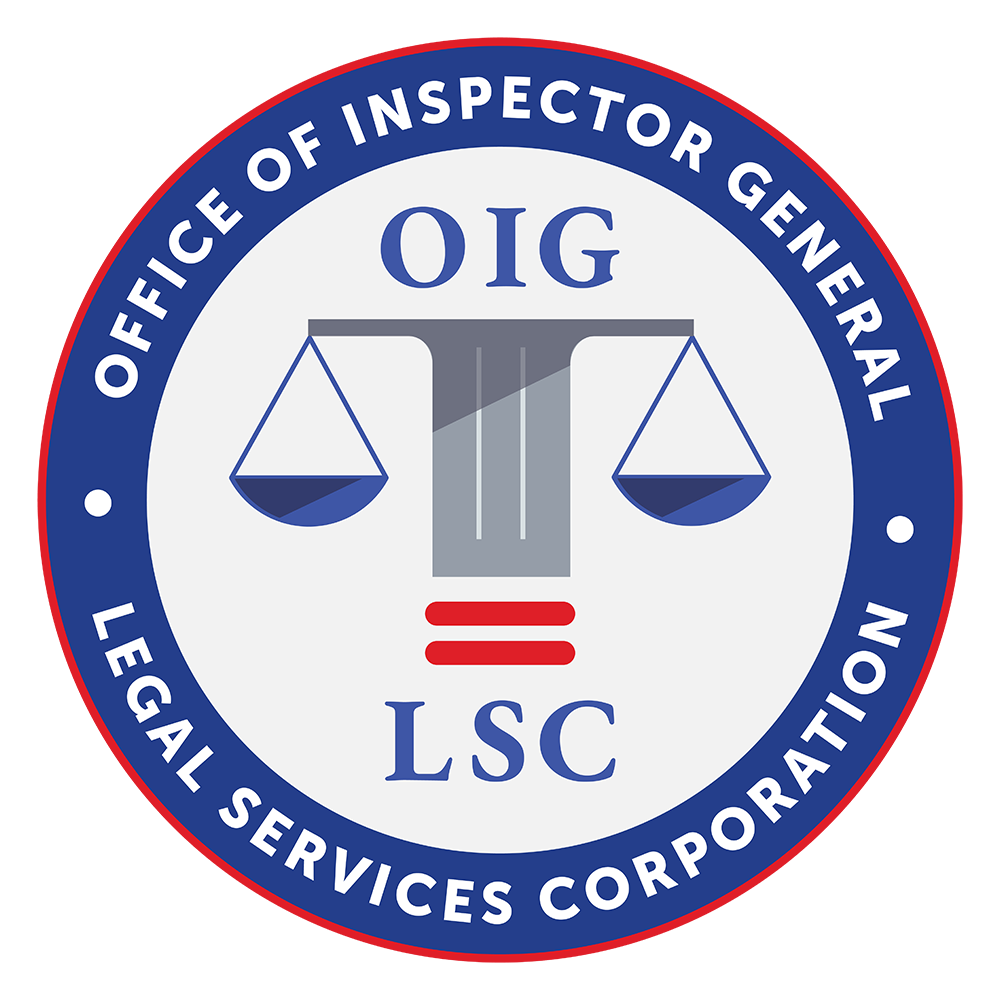Objective:
In the interest of furthering our mission to promote efficiency and effectiveness in the activities and operations of LSC and its grantees area, the LSC OIG conducted a concept evaluation to determine the utility of mapping in support of legal services strategic and operations management at the local, state and national levels.
Overview:
This project identified, prototyped, documented and assessed the maps and census poverty information that are valuable to legal services decision-makers. The maps visualize the geographic distribution and changes of the poverty and the LSC income-eligible populations. They compare the potential legal services client base to legal services closed cases at various scales to give macro and micro-level views on the legal services environment and access to legal services to low-income individuals from a geographic perspective. As such, this evaluation also serves as a demonstration project for the application of geographic information technologies in the legal services environment and its possible replication and deployment elsewhere. This web page provides detailed information on both the evaluation's results and technical best practices.
The evaluation has spanned over two separate phases. In phase I, the OIG, working closely with the two LSC grantees — Georgia Legal Services Program and Atlanta Legal Aid Society, servicing the Georgia, determined that maps are a useful management tool having potential long-range programmatic benefits in the following strategic and operational areas:
Increasing access to legal services for low-income persons — Maps offer a picture of the geographic distribution and movements of poverty and LSC income-eligible populations. When compared with clients served and legal services provided, the under-served can be identified and addressed;
Strengthening planning, resource and performance management — Mapping provides a visible model of the legal services environment supporting service provision, priority setting and deployment of office locations and staff. Maps have promise for measuring the success of grantees — various programs and outreach initiatives; and,
Improving program promotion — Maps show potential funders the extent of the legal services contribution to the low-income community and clearly document the unmet need for legal services. Maps effectively communicate the disproportionate size of the income-eligible population compared to the available resources. They are a persuasive tool that managers can use when seeking additional funding from federal, state, local and private sources.
However, additional work was needed to fully evaluate mapping and develop it into a viable legal services management tool.
In Phase II, the OIG further evaluated the usefulness of legal services mapping while developing a Core Legal Services Map List, Map Book, and neighborhood-scale maps. The map templates, methods and categorizations were further refined and tested in a larger number of grantees serving both urban and rural poverty conditions in Southern California, Montana and updated Georgia.
The OIG is working on the Phase II Evaluation report but please return to the previous page to see the products generated.
Archive:
The Evaluation of Legal Services Mapping has been archived into a single WinZip file. To access the outline below with links to applicable files, download the .zip file to your local system, uncompress its contents, and browse to the file mapping.htm opening it in your browser.
Download archive HERE (Size: 458.57 MB).
Outline of Archive:
Phase II:
- Presentation before the LSC Board of Directors Committee on Provision for the Delivery of Legal Services (meeting held February 4, 2005)
- LSC Grantee Project Evaluations
- Utilizing GIS to Study Legal Needs Issues: An Analysis of the LSC OIG Southern California Mapping Project by James W. Meeker J.D, Ph.D., University of California, Irvine
- Developed Core Legal Services Map List
Maps
- Southern California
- Montana
- Georgia
Available Census Poverty Data
- Southern California
- Montana
- Georgia
Technical Best Practices
- Lessons Learned
- Summary of Methods and Processes
Geocoding - is the process that coverts addresses to locations on a map.
Methodology
- Standard Process
- Enhanced Enhanced
Results
- Southern Californa (Group)
- ICLS
- LAFLA
- LASOC
- LASSD
- NLS
- Montana
- Georgia (Group)
- ALAS
- GLSP
Mapping Standards
- Sample Map Specification Sheet
- Standard Titles and Legends
- Legend Standards
Bias Analysis
- Southern California
- Georgia
Project Database - Overview, Structure and Queries
- Data Store Overview
- Relational Database Diagram
- California GeoDatabase Layers
- Georgia GeoDatabase Layers
Southern California
- Census Tables and Views Index
- Case Tables and Views Index
- SQL to Extract Census Data - MS Word
- SQL to Extract Case Data - MS Word
Georgia (Update)
- Census Tables and Views Index
- Case Tables and Views Index
- Query Language to Extract Census Data (SQL)
- Query Language to Extract Case Data (SQL)
Phase I:
- Legal Services in Georgia
Maps
OIG Presentation before the LSC Board of Directors Committee on Provision for the Delivery of Legal Services (meeting held January 31, 2003)
Contact:
David Maddox, 202 295 1653, DM@oig.lsc.gov
